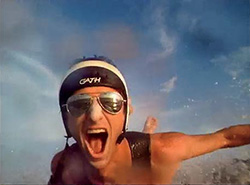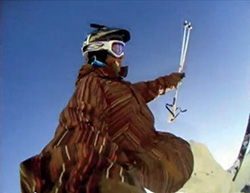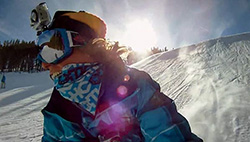Introduction: History of GoPro
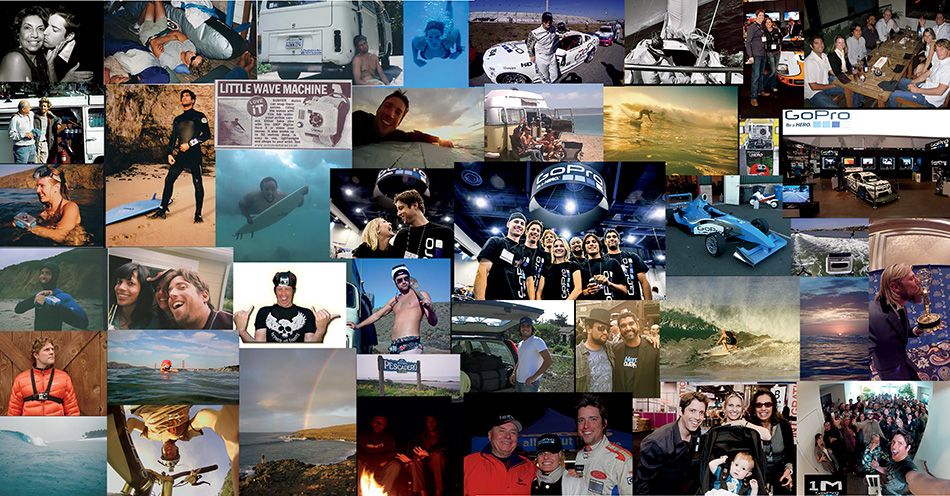
As recalled by Bradford Schmidt
It was 2002. I was back home after three years of traveling, holding in my hands dozens of 35mm photographs still warm from the printing machine at my local pharmacy. My brother was there, thumbing through the photos with me. I hoped these pictures might be enough to convince him to return with me to a magical set of remote islands that were being whispered about in the surfing community—the Mentawais. Although it had been a surf trip, any pictures of myself actually surfing were conspicuously absent. I had traveled alone, so all the shots were limited to perfect waves without a surfer in sight, taken from the beach before I paddled out. The photos felt strangely empty, considering the euphoria I’d experienced riding those waves.
The results were going to be different the next time, however I scraped together enough funds for another round-the-world ticket and bought an expensive waterproof 35mm camera. Several months later, my brother and I stepped onto the wooden planks of an old ferry leaving from Padang, Sumatra, for the far-flung Mentawai Islands. On the back deck of the ferry, where we strung our hammocks and surfboards, lay a fair-skinned, blonde-haired woman taking a nap. Strange. This was a locals’ ferry... typically no Westerners. Then from the depths of a cargo hold filled with fluttering chickens and bleating goats came a distinct laugh, warm and booming. A wild-haired Nicholas Woodman was charming the captain of the ferry with his broken Bhasa and salty grin.
On the overnight ferry, we learned that Nick had graduated from the University of California, San Diego with a major in visual arts, though he had no interest in a normal job. He wanted to be an entrepreneur. He’d started a company called FunBug during the dotcom era, but it had gone bust after a couple of years. Reeling from that failure, he decided to spend his personal savings on an extended surf trip to stretch his mind and gather inspiration for his next venture. Nick also came prepared to document his love for surfing. He’d combined a surf leash, a series of O-rings, and a disposable waterproof camera—the first GoPro prototype.
Over the next two months, my brother, Nick, his girlfriend Jill (now his wife), and I became tight companions, traveling together from wave to wave and island to island. Nick and I connected through our mutual love of photography and our desire to get the shot. We surfed many sessions experimenting with his prototype wrist camera, dreaming of the possibilities of where such an idea could go.

After that trip, I continued on to Africa and traveled for several more years while Nick returned to California to start GoPro. All the while, Nick was busy patenting the wrist strap design and trying to get his company off the ground. Originally, his vision was to develop a wrist strap that was interchangeable with any disposable camera and license the idea to a larger company. But that process proved to be too slow and difficult and Nick determined there was more opportunity in developing his own camera specifically designed for his wrist strap invention.
By 2004, I was living in San Diego working as a surf instructor. One day, I got a call from Nick asking me to help him set up his booth at the local surf industry trade show. Nick and Jill drove down and picked me up in their VW bus. We set up a quaint little booth complete with faux Roman pillars Nick borrowed from his parents and large Kinko’s printouts of GoPro’s first product: a waterproof wrist camera named HERO. There we were, a tiny little idea surrounded by the titans of the surf industry. As we parted ways after the trade show, Nick handed me a HERO camera to use on my next adventure, working on boats in the Caribbean and surfing in Mexico.

A year later, I returned to California. Jill picked me up in San Francisco and drove me down to Pescadero where their 1971 yellow VW bus named “Lily” waited for me. I was to buy it and live in it while attending film school. Woodman had been developing the first digital version of his HERO camera. Operating on one AAA battery, it could record 10 seconds of low-res video at 240p, somewhere around 20 frames per second, with no audio. He was ecstatic about the possibilities... a tiny video camera the size of a matchbox! Having been entrusted with one of his new prototype cameras, I drove away in my new bus and picked up my childhood friends Brandon Thompson and “Big Metal” Todd Henry and headed south to Baja. Most of our product testing took place around Scorpion Bay. It was there that we recorded the first ever GoPro follow-cam shots and the 1971 VW bus became known as “The Chupacabra.”
In 2007, I was still at UCLA studying filmmaking when Nick released his second generation digital wrist camera, the Digital HERO 3. It captured three-megapixel photos, and was a quite innovative for its time. By then, GoPro was doing well enough that Nick could afford to attend race driving school, another one of his passions. During school, Nick had the idea to strap his digital wrist camera to the roll bar of his car to record video of himself driving on the track. As soon as Nick stepped back and saw his wrist camera mounted in this new way, a lightbulb turned on and Nick suddenly realized that GoPro could be much more than just a wrist camera company.
That summer I was headed back down to Baja again with my friend Brandon, and before we left a box arrived from Nick. It contained a few of his Digital HERO 3 cameras, several prototype waterhousings, a bunch of adhesive-backed, 3D-printed mounts for attaching the cameras to surfboards, a vented helmet strap, and most importantly, experimental wide-angle lens adapters. Brandon and I used duct tape to attach the lens adapters to the waterhousings and used surf wax to waterproof the lens elements. Somehow, the adapters worked well enough and Brandon and I were inspired to shoot the first (and perhaps the silliest) GoPro story: “The Last, Greatest Epic Spot.”
In the Fall of 2008, Nick gave me a call to say there was no need to duct tape and surf wax seal the wide angle lens adapters anymore. He wanted to fly me to Bali for a week and even pay me. I just needed to bring home tropical barrel shots with the first ever wide angle GoPro: the Digital HERO 5 Wide.
Weeks later, I walked straight off the plane from Bali to another ASR tradeshow in San Diego to deliver the golden shots. But this time, I didn’t find a small booth with faux Roman pillars. GoPro had several big-screen TVs, a motorcycle, a race car, and a sports car in a big open space next to the titan surf companies. Alongside Nick and Jill were Neil Dana, Ruben Ducheyne, Vince Geluso, Damon Jones, and Justin Wilkenfeld. All were friends of Nick’s who had helped grow GoPro over the past few years. Nick had hired his college friends on the theory that working with friends made work feel less like work. Not a bad theory, as it turns out.
At that tradeshow, a USC ski crew convinced Justin to sponsor them with two new wide-angle GoPros. That winter, future Senior Production Artist Abe Kislevitz and his friends would make ski videos like nothing we’d ever seen before. Nick later stumbled upon these videos on YouTube and was inspired to hire Abe.
A year later, in August 2009, a little cardboard box arrived at my doorstep. It was actually Brandon’s doorstep—I had only just graduated from film school, was unemployed, and was sleeping on his couch. Inside the box was a prototype GoPro HD HERO... 1080p. I was expecting it as Nick had called me the day before to tell me he was sending me his latest and greatest camera. “This is going to change everything,” he’d said. Up until that point GoPro felt more or less like a cool hobby idea my good friend had come up with. I picked up the camera and walked outside to shoot some sample footage in the parking lot. Once I came back in and watched the footage on my computer, I started freaking out and called Nick:
“Nick! This camera is going change everything,” I yelled.
“Dude, I know! That’s what I was telling you!” Nick shouted back.
“So what do you think?” he then asked. “Do you want to move up here full-time and start a YouTube channel for GoPro?”
“Yes, my friend. Yes.”
It seems only a short time, but a lot has happened since then.
It’s often said that success can have strange effects on people, especially between friends. There is a fear that the essence of the friendship and the purpose of the things you work so hard to achieve will be lost. Such has not been the case at GoPro. It’s still a company of friends—only there are more of us. Nick’s desire to bring his friends together on a shared quest has made GoPro a family. Everyone cares about each other as much as we care about the company.
Success hasn’t changed who we are, and for that I am so grateful. Jill’s laughter today is as infectious as the first time I heard it on the Sumatran seas. Nick’s voice retains that resonating warmth, and that curious sparkle in his eye has only gotten brighter with time.
NASDAQ, New York CIty
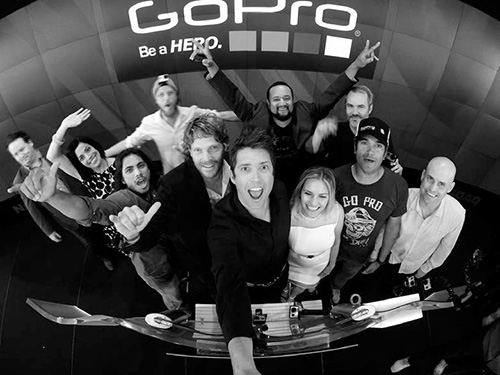
By the start of 2014, GoPro had become the No. 1 brand channel on YouTube. On June 26th, 2014, GoPro became a publicly traded company. The IPO valued GoPro at several billion dollars.







